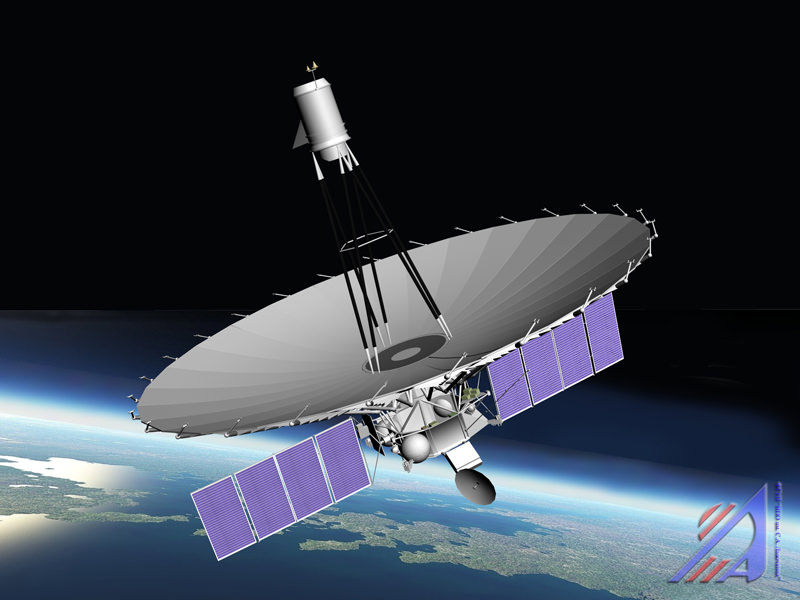[/caption]
This is hardly breaking news, but there’s a new Russian space telescope in town. With a name like an anime character, Spektr R was launched on 18 July 2011 and its 10 metre carbon fibre dish was deployed a week later. It’s a radio telescope and – via a very large baseline array project known as RadioAstron – it will become arguably the world’s biggest radio telescope – and by a very long shot.
Following so closely after the Space Shuttle fleet’s retirement, the media has latched onto the idea that this represents a major step up from the Hubble Space Telescope and a further indication of the USA’s decline from space. But, nah…
Don’t get me wrong, when fully operational RadioAstron will be the biggest ever interferometer and is likely to deliver some great science when it gets up to speed. Well done, Roscosmos. But the various comparisons made between it and Hubble are a little spurious.
RadioAstron’s angular resolution is reported as 7 microarc seconds (or 0.000007 arcseconds) while Hubble’s resolution is generally reported as 0.05 arc seconds – so RadioAstron is reported as having over a thousand times more resolution. Well, sort of – but not really.
Firstly, the 10 metre radio mirror of Spektr R is designed to detect centimetre range wavelength light, while Hubble’s 2.4 metre mirror, is capable of detecting wavelengths in the visible light range of 350-790 nanometre range (and some non-visible infrared light too).
Angular resolution arises from the relationship between the wavelength of light you are observing and the size of your aperture. So, at the single instrument level Hubble rules supreme in the resolution stakes.

The resolution assigned to RadioAstron (the telescope array) arises from the ‘virtual’ dish diameter created by Spektr R’s orbit, when arrayed with ground-based radio telescopes – which may eventually include Earth’s largest dish, the 300 metre Arecibo dish and Earth’s largest steerable dish, the 110 metre Greenbank radio telescope.
Spektr R will orbit the Earth via a highly elliptical orbit with a perigee of 10,000 kilometres and an apogee of 390,000 kilometres – so giving an elliptical orbit with a semi-major axis of 200,000 kilometres. That sounds like one big dish, huh… although it isn’t, really – just virtually.
Don’t get me wrong, there is a huge increase in information to be gained from arraying Spektr R’s one data point with other ground based observatories’ data points. But nonetheless, it is just radio light conveyed information – which just can’t deliver the level of detail that nanometre wavelength visible light can carry.
That’s why you can usefully create radio telescope arrays, but you can’t gain much value from arraying visible light telescopes (at least not yet). The information conveyed by radio light is spread widely enough so that you can estimate the information it is carrying from just detecting it at two widely spread detectors – and then superimposing that data. The fine detailed information contained in visible light is just too complex to allow this.
So putting up RadioAstron up as a contender to the beloved Hubble Space Telescope makes no sense. It is a totally different scientific project that will deliver totally different – and hopefully awesome – scientific data. Ad astra. If we want a step up from Hubble, we need to get the James Webb Space Telescope back into production.

